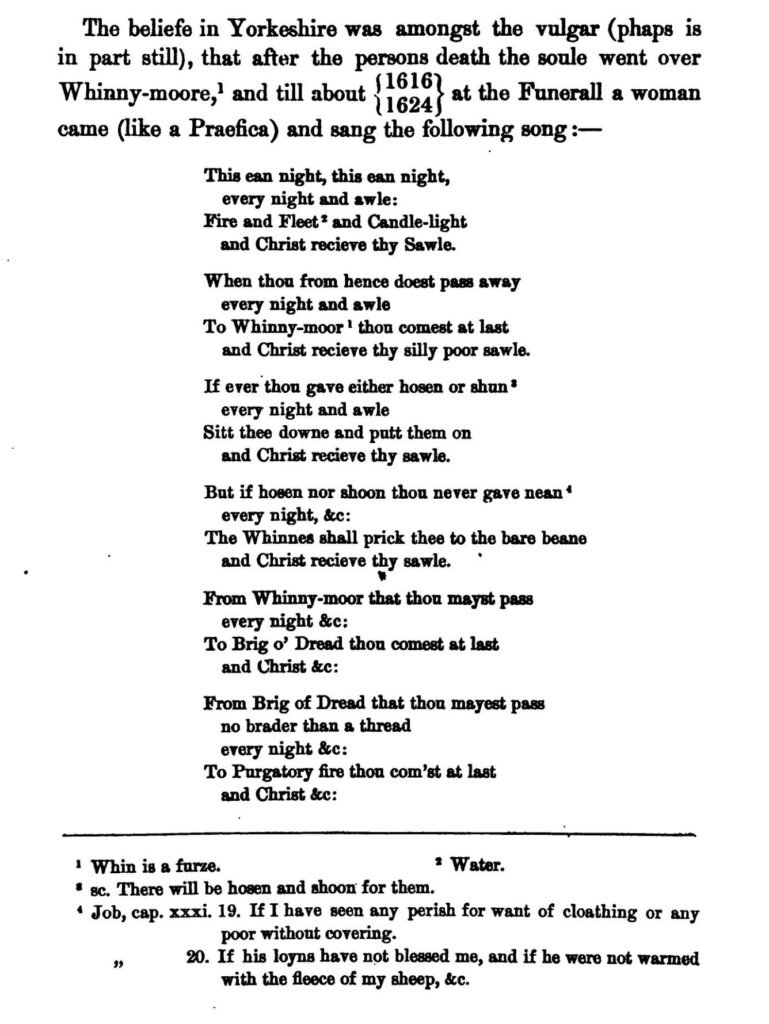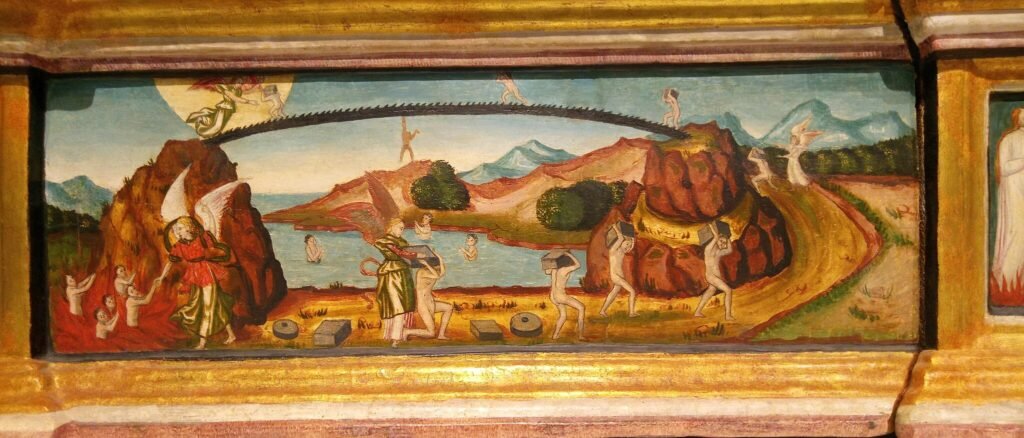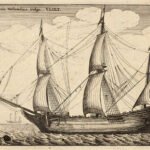Here’s a strong song that you can find, arranged by Peter Hill and Sheena Phillips, in the Canasg catalogue. The lyrics are at least as old as the 17th century: they were noted down by John Aubrey, an early folklorist, in 1686. (Aubrey is also known for Brief Lives, a collection of short biographies, and for his close examination of the Avebury stone circle and Stone Henge in the south of England.)
‘Lyke’ is an old English word for ‘corpse’, and a ‘wake’ is a social gathering around the body of a dead person, before the funeral, usually at their home. So the Lyke Wake Dirge is a song for singing at wakes. Apart from Aubrey’s account, there’s also a 16th century letter – in a collection called the Cotton manuscripts – describing the singing of a very similar kind of song, also in Yorkshire: ‘When anyone dies, certain women sing a song to the dead body, reciting the journey that the deceased must go, and they are of the belief, such is their fondness [credulity or foolishness], that once in their lives it is good to give a pair of new shoes to a poor man….’.
Here’s an extract from John Aubrey’s notes on the song in his Remains of Gentilisme and Judaisme, 1686, as reprinted in 1881 by the Folk-Lore Society:

The lyrics tell that the soul of the dead person will have an easier passage through Purgatory to heaven if they have done good deeds during their lifetime. So it has a Roman Catholic world view, even though being a Catholic in England was a minority pursuit by the late 17th century. (That’s a very long story, but is connected to Henry VIII’s break with Rome in the 1530s, the establishment of a new ‘Church of England’, and lots of politics).
The song is in an old Yorkshire dialect – which you’ll find a guide to on wikipedia and also in our edition. The meaning of the refrain is basically that the dead person’s soul will have one more night of the warmth and light of home before starting its journey. There’s also a nice connection between the song and Canasg: the ‘Whinny Moor’ of the song refers to the prickly ‘whin’ or ‘gorse’ bush, Canasg’s namesake.

The principal arranger of Canasg’s edition is Peter Hill, who is Yorkshire born and bred. Peter brought the song to the attention of Rudsambee Company of Singers, which we were both founder members of, and it became part of our core repertoire. Incidentally, Peter is now living in Yorkshire again after many years in Scotland and China.
What about the tune? John Aubrey did not make any record of the tune that he heard being sung in 1686. The first published tune that we know about for the song is by Harold Boulton, in his Songs of the North (1895). That tune was written by Harold Boulton himself. Both rhythmically and melodically it’s rather similar to the one that is ‘traditional’ for the song today, but it took the intervention of a 1960s folk group – The Young Tradition – to establish the tune in the shape that we know. According to the singers, they got the tune from Hans Fried. And according to Hans Fried, he heard it from his step-mother, who heard it from ‘an old Scots lady, Peggy Richards’. So by some combination of misremembering and conscious re-crafting, Harold Boulton’s late 19th century creation has morphed into something different (but similar) – and very memorable.
If you’d like to read more about the history of this fascinating song, I strongly recommend the excellent blog post by Ian Pittaway, which I have drawn on in this one.
For more about the groups who have recorded the song, see this page of the folk website mainlynorfolk.info


